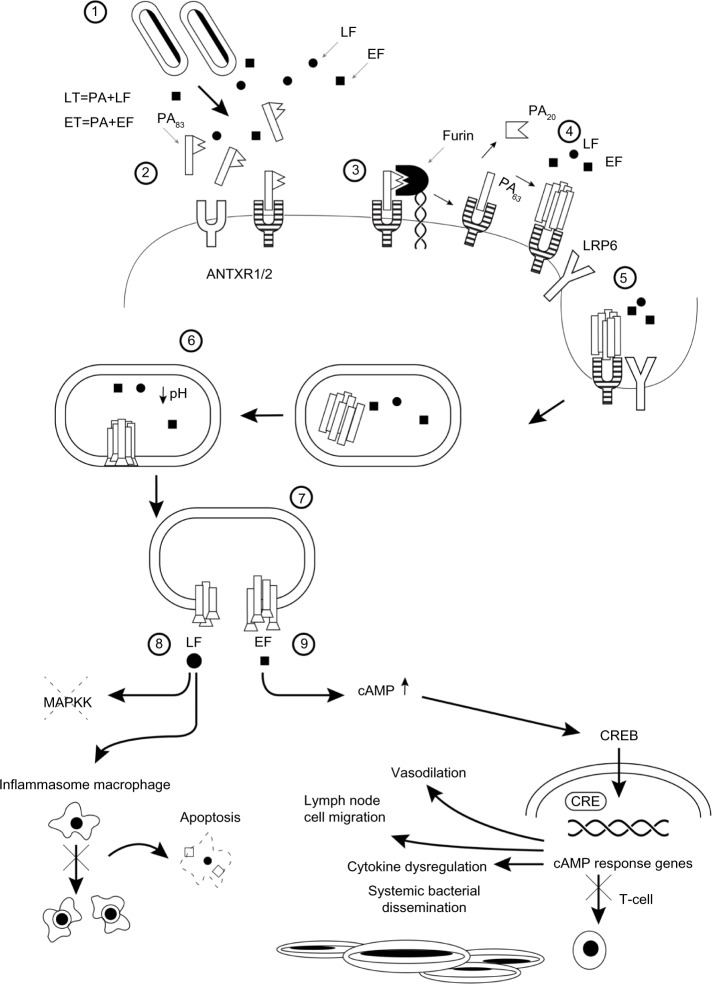Figure 1.
Pathophysiology of anthrax illustrated as a series of steps. 1) Bacillus anthracis spores germinate and release lethal factor and PA. Initially, PA is an 83 kDa monomer. 2) PA83 binds to the ANTXR1/2 transmembrane receptors in the host cell. 3) Furin, a cell surface proprotein convertase, cleaves PA83 into PA20 and PA63 fragments. The PA20 fragment is cleaved off while PA63 remains bound to the receptor. 4) Proteolytically processed PA63 monomers assemble into a heptameric or octameric PA prepore. The PA prepore can bind up to three or four lethal factor or monomers. 5) Prepore clusters are internalized with or without the LRP6 coreceptor via receptor-mediated endocytosis, resulting in endosome formation. 6) Acidification of endosome results in prepore transformation into a transmembrane delivery pore. 7) Release of lethal factor and edema factor inside the cell. 8) Lethal factor, a zinc metalloproteinase, inactivates MAPKK, resulting in impaired lymphocyte activation, B cell proliferation, as well as macrophage apoptosis via activation of the cytosolic inflammasome pathway. 9) A calcium-dependent and calmodulin-dependent adenylate cyclase increases intracellular cAMP, resulting in activation of cAMP response genes. Migration of infected macrophages to lymph nodes is stimulated, as well as inhibition of T cell activation, impaired phagocytosis, oxidative burst, and cytokine dysregulation. cAMP induces vasodilation, leading to edema.
Abbreviations: LF, lethal factor; EF, edema factor; PA, protective antigen; LT, lethal toxin; ET, edema toxin; ANTXR1/2, low (ANTXR1, previously tumor endothelial marker) or high (ANTXR2, previously capillary morphogenesis protein) type 1 transmembrane receptors; LRP6, low-density lipoprotein receptor-related protein 6; MAPKK, mitogen-activated protein kinase kinases; CREB, cAMP response element binding protein; CRE, cAMP-response elements; cAMP, cyclic adenosine monophosphate.

